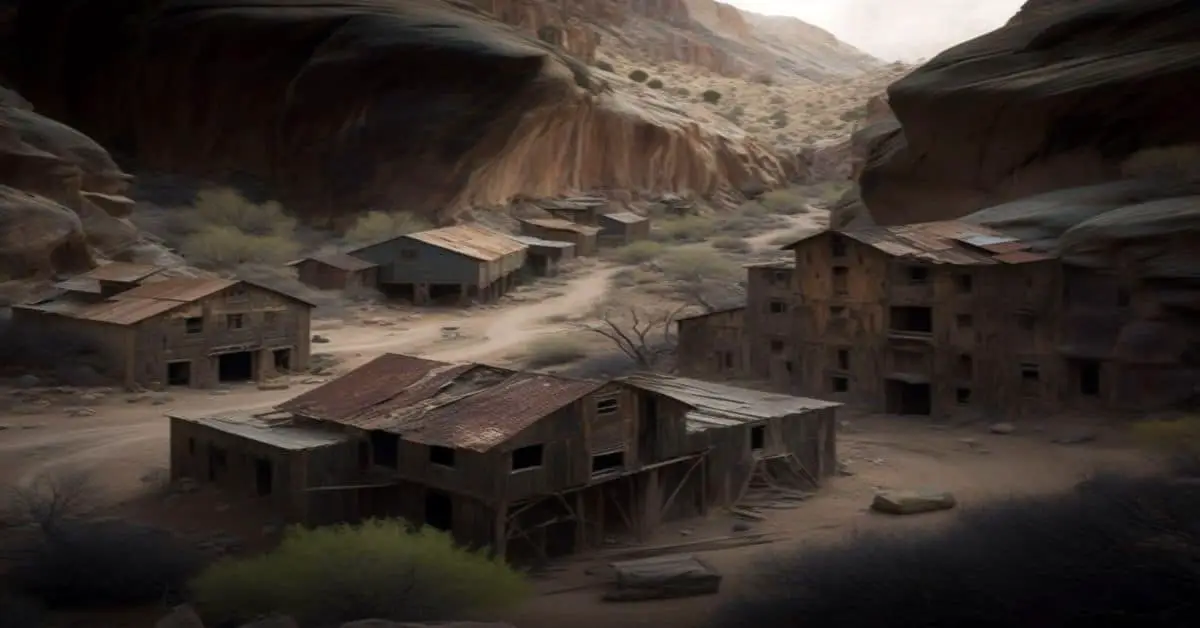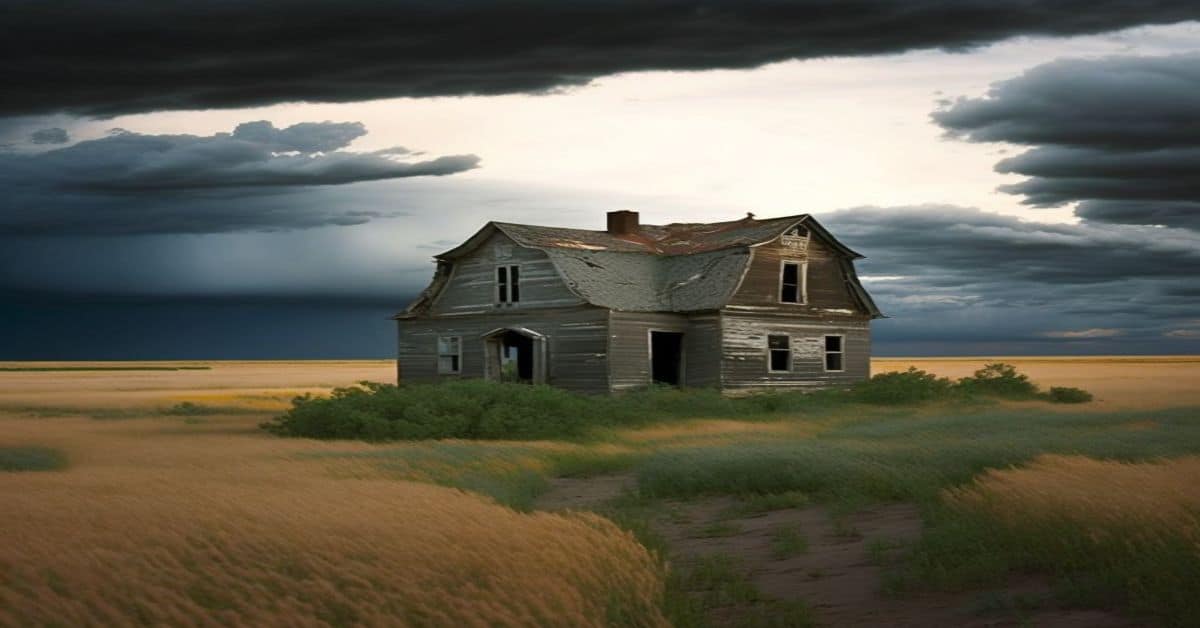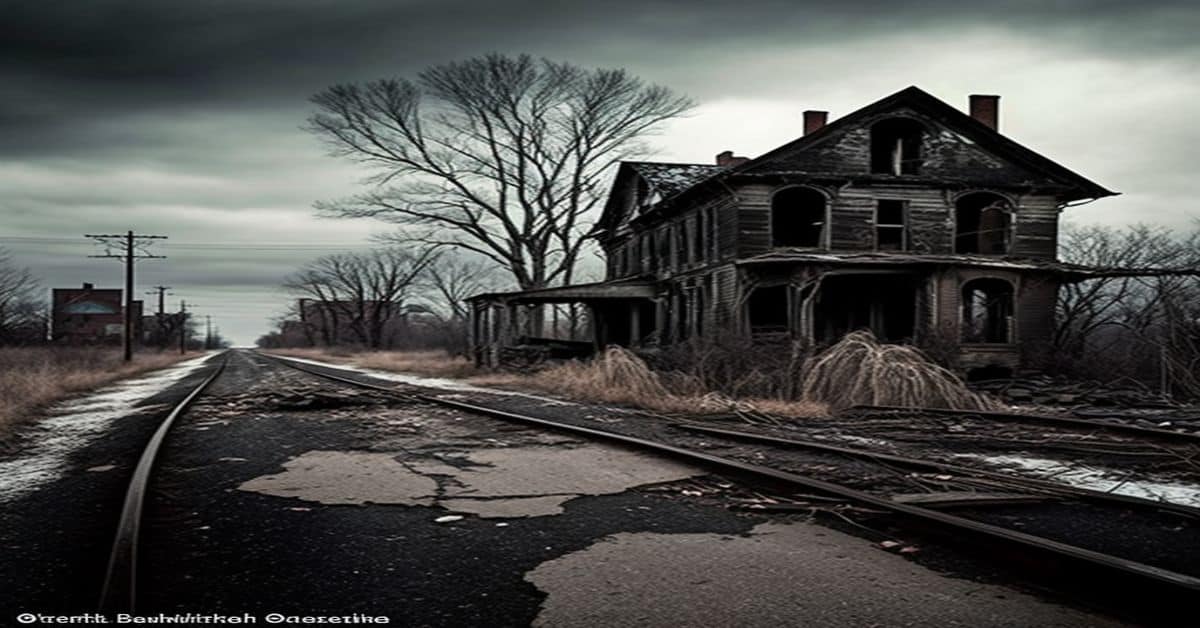Located in Shackelford County, the abandoned ruins of Fort Griffen offer a fascinating glimpse into the past. This Texas ghost town is steeped in history, offering visitors a unique opportunity to discover the haunting stories that lie within its walls.
Fort Griffen was once an important military outpost during the Indian Wars, playing a significant role in the settlement of the West. Despite being abandoned in the 1890s, the town’s ruins still stand, offering a stark reminder of the past.
In this article, we will explore the fascinating history of Fort Griffen, uncovering the secrets of this eerie ghost town and the stories that lie within its walls.
Key Takeaways
- Fort Griffen played a significant role in the settlement of the West and the Indian Wars, strategically located to protect frontier settlements from Indian raids.
- The soldiers stationed at Fort Griffen patrolled and secured the surrounding area, equipped with defensive features such as a stockade, barracks, and a hospital.
- Fort Griffen is now in ruins, but visitors can still see remnants of old buildings and structures, offering a unique experience for those interested in American history.
- The ruins of Fort Griffen are a popular tourist destination and a fascinating glimpse into the past, worth visiting to learn about the town’s history as a military outpost during the Indian Wars.
Location and Establishment
Fort Griffen, previously a military outpost established in 1867 and located in Shackelford County, Texas, is a ghost town that is now in ruins. The town was named after Brigadier General Charles Griffin, who served in the Union Army during the American Civil War. Fort Griffen was an important military post during the Indian Wars and played a significant role in the settlement of the West.
Exploring the ruins of Fort Griffen offers visitors a glimpse into the town’s past and history. Although the town is in ruins, visitors can see remnants of old buildings and structures that testify to the town’s past. The ruins may not be as impressive as other ghost towns, but they offer a unique experience for history buffs.
Overall, Fort Griffen is a historical site worth visiting to learn about the town’s history and its role in the settlement of the West.
Military Significance
During the 19th century, Fort Griffen played a crucial role in the Indian Wars and the settlement of the West. The military outpost was strategically located in Shackelford County to protect the frontier settlements from Indian raids. The fort was built in response to the increasing conflicts between settlers and Native American tribes in the area.
The soldiers stationed at Fort Griffen were responsible for patrolling and securing the surrounding area and maintaining peace between settlers and Indian tribes. The military architecture of Fort Griffen was designed to provide protection and support for soldiers during conflicts. The fort had various defensive features, including a stockade, barracks, and a hospital.
These buildings were constructed using local materials, such as limestone and adobe, and were designed to withstand attacks from hostile forces. The fort also had a stable and a blacksmith’s shop to support the cavalry during patrols. Overall, Fort Griffen played a significant role in the history of the West, and its military significance is a testament to the challenges that were faced during this time.
Tourist Attraction
As a popular tourist destination, this Texas ghost town offers visitors a glimpse into the past and a chance to explore the ruins of a once-thriving outpost. The ruins of Fort Griffen are a testament to the town’s past and are a unique historical site worth visiting for history buffs.
Visitors can explore the old buildings and structures that have been left in ruins and learn about the town’s history as a military outpost during the Indian Wars.
The historical significance of Fort Griffen lies in its role in the settlement of the West. It served as an important military post during a turbulent time in American history and was key in protecting settlers and transportation routes.
Today, visitors can experience the haunting history of Fort Griffen by exploring its ruins and learning about its past. The town’s ruins are a reminder of the struggles and triumphs of the settlers who once called it home and offer a unique glimpse into the past for those interested in American history.
Frequently Asked Questions
What caused the abandonment of Fort Griffen in the 1890s?
Possible causes for the abandonment of Fort Griffen in the 1890s include the conclusion of the Indian Wars and the shift of military focus to other areas. Despite this, the town’s historical significance remains as a reminder of its role in the settlement of the West.
Are there any legends or ghost stories associated with the ghost town?
The ghost town of Fort Griffen has no documented supernatural sightings or paranormal activity. However, local folklore does mention spooky tales of strange occurrences, which adds to the eerie atmosphere of the abandoned town.
What was daily life like for soldiers stationed at Fort Griffen during the Indian Wars?
Soldiers stationed at Fort Griffen during the Indian Wars faced numerous hardships, including harsh living conditions, limited resources, and difficult terrain. They also interacted with various Native American cultures, which often resulted in conflicts and tensions.
Has any restoration or preservation work been done on the ruins of Fort Griffen?
Restoration efforts have been made to preserve some of the ruins of Fort Griffen. Future plans include preserving the remaining structures and expanding educational opportunities for visitors to learn about the town’s history.
Are there any artifacts or relics from Fort Griffen on display at the tourist attraction site?
Artifacts and relics from Fort Griffen are on display at the tourist attraction site, showcasing the town’s historical significance. Visitors can view items such as military uniforms, weapons, and personal belongings of soldiers who once occupied the fort.


